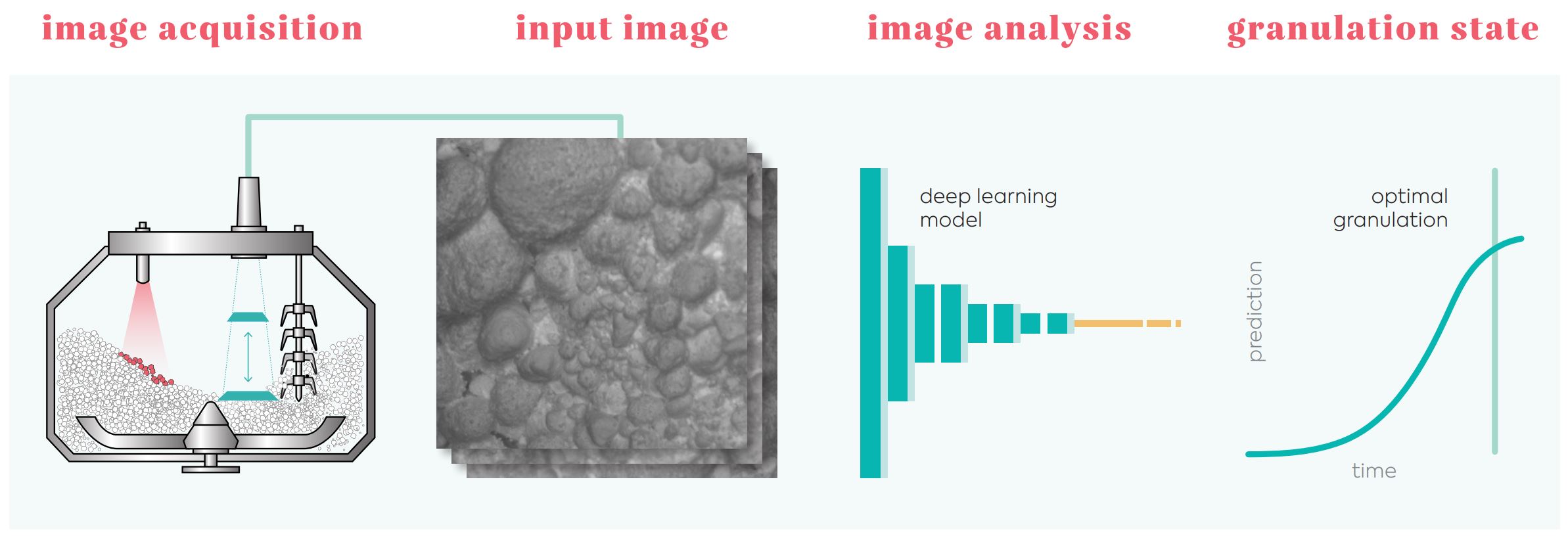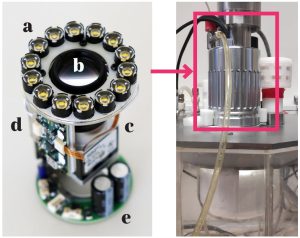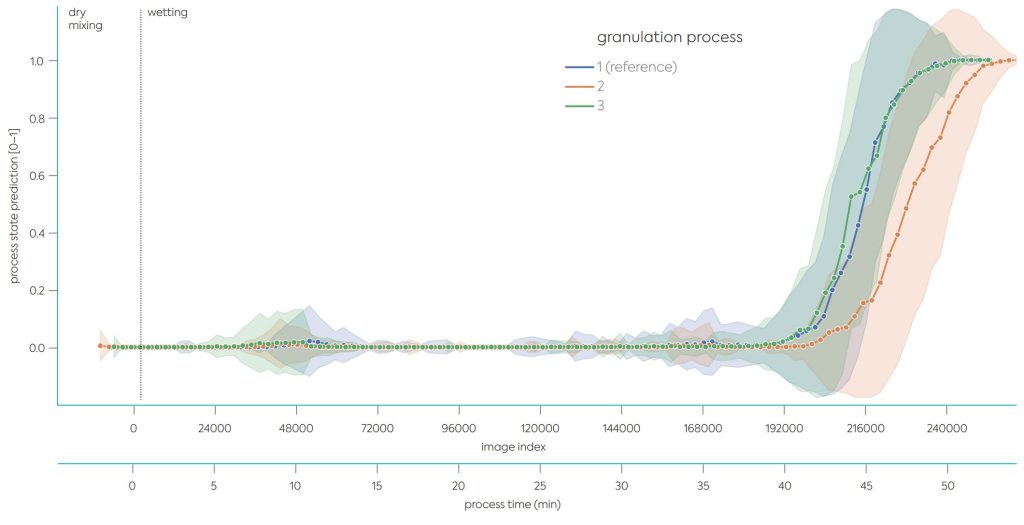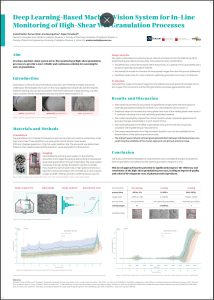Deep Learning-Based Machine Vision System for In-Line Monitoring of High-Shear Wet Granulation Processes

Aim
Develop a machine vision system for in-line monitoring of high-shear granulation processes to provide a more reliable and continuous solution for assessing the state of granulation.
Introduction
Granulation is critical for pharmaceutical production, but inherently complex and poorly understood. Technologists rely in part on the visual appearance of granules, but this requires extensive training and can be inconsistent. With recent advances in deep learning, machine vision could be used for quantitative process end-point determination [1, 2].

Materials and Methods
Granulation
We granulated a 2.2:1 mixture of mesoporous silica and isomalt with water in a laboratory-scale high-shear mixer. Three repetition runs were performed at 125 rpm mixer speed, 1000 rpm chopper speed and ~1.8 g/min water addition rate. The end-point was determined based on the impeller torque and the operator’s visual examination of the product.
Imaging

We installed the machine vision system on the lid of the granulator and imaged the granule bulk surface at varying bulk levels during granulation through a sight glass.
The vision system comprises of a high-density illumination unit (a), a variable focus liquid lens optical system (b), a high-speed camera (c), a liquid lens and an illumination unit controller (d,e), and acquires images at 2048 × 2048 px resolution at 80 frames per second.
Image analysis
We used a customized convolutional neural network architecture from the VGG family [3] for predicting the granulation process state, formulated as binary classification:
- We defined two critical time periods within the process, i.e. a period of non-granulated and a period of optimally-granulated material.
- We trained the model on a fraction of the acquired images from the first process (reference).
- Predicted values close to 1 when material is optimally granulated and close to 0 otherwise.
Evaluation
We tested the model on the test images from the reference process (proof of concept) and on the images from the second and the third granulation processes (generalization test)
Results and Discussion
- The trained neural network accurately recognized the images within the time period of optimally granulated material for all three runs, with predicted values close to 1.
- Predicted values for the entire dry mixing phase and most of the wetting phase were close to 0, correctly indicating non or sub-optimally granulated material.
- The model meaningfully assessed the critical transition phase, where the appearance of granules changes substantially in a short period of time.
- The model predicted a time offset in granulation end-point for the second process, consistent with impeller torque measurements.
- The torque measurements show high standard deviation and can be unreliable for the determination of the optimal granulation state.
- The trained neural network showed good generalization between individual process runs, confirming the suitability of the chosen approach and giving it practical value.

Conclusion
The study confirmed the feasibility of using machine vision and deep learning to evaluate the state of granulation and determine the optimal granulation endpoint in-line.
This novel approach has the potential to significantly improve the efficiency and consistency of the high-shear granulation processes, leading to improved quality and reduced development costs of pharmaceutical products
See the full poster on “Deep Learning-Based Machine Vision System” here
(click the picture to download the poster)
Source: Sensum poster “Deep Learning-Based Machine Vision System”, Andraž Mehle, Domen Kitak, Ana Baumgartner, Dejan Tomaževič, Sensum, Computer Vision Systems, Ljubljana, Slovenia, Faculty of Pharmacy, University of Ljubljana, Slovenia, Faculty of Electrical Engineering, University of Ljubljana, Slovenia


